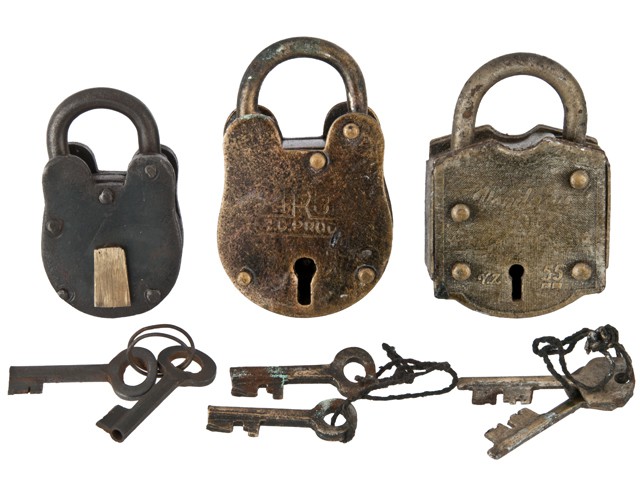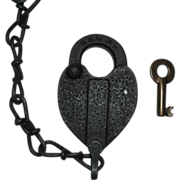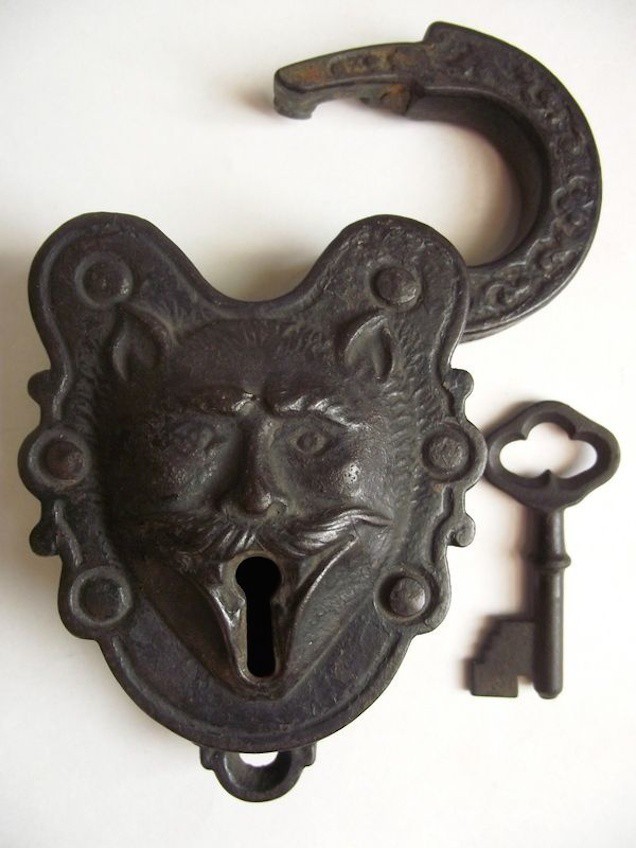
Pack Lock Picking History
Padlocks were first invented way back in the day. In this article we will cover the ancient origins and walk you through to the the present day in padlock history. To start, let’s go way way back…
Here are the areas in which padlocks were first discovered in the old world:
- Chinese 25AD
- Romans 300AD
- Vikings 850AD
Throughout history, there has been heavy use of padlocks mostly in commercial uses. For instance, if you were a trader running spices from China to England – you wanted to make sure that no one took all of your loot before reaching your destination. Most of these ancient padlocks were forged from either iron, silver, brass or some other type of heavy metal. These old padlocks were also used to protect farm animals and agricultural yields from hoarding marauders.
 Padlocks in England remained basically the same for centuries. These were called the Smokehouse style of padlocks. Locks of this kind could be forced open pretty easily if you were strong enough. These were the first locks that coined the term “padlock” originally from the word “paddock” which refers to the livestock that they used these locks to protect. The history of padlocks is interesting.
Padlocks in England remained basically the same for centuries. These were called the Smokehouse style of padlocks. Locks of this kind could be forced open pretty easily if you were strong enough. These were the first locks that coined the term “padlock” originally from the word “paddock” which refers to the livestock that they used these locks to protect. The history of padlocks is interesting.
The newer Scandinavian padlock mechanisms were introduced in the 1850’s. These were much improved and harder to simply force open with brute force. The man who created these locks went by the name Chris Polhem. The padlocks of Scandinavian design were made for iron. The locking mechanism that kept them secure was a series of discs. This type of padlock is still manufactured in some parts of the world, although the pin and tumbler mechanism is much more secure.
History Of Padlocks Continued
 Similar to the Scandinavian padlocks, heart shaped locks became very popular for along time. These heart shaped locks (yes, like the Nirvana song) were stronger, harder to pick and turned out to be more popular for people who were serious about protecting their belongings than any padlock that had been created before. The locking mechanism for these locks was a cover that had a spring behind it that would rotate on top of the key hole. It also had a spot to attach a chain or wire to so that it could easily be attached to things. These locks were highly weather resistant and therefor was used in all different types of dirty and grimy environments from farms to mine shafts. These locks were so hardy in fact that they would even work in sub zero temperature which makes sense being that they originated in Scandinavia.
Similar to the Scandinavian padlocks, heart shaped locks became very popular for along time. These heart shaped locks (yes, like the Nirvana song) were stronger, harder to pick and turned out to be more popular for people who were serious about protecting their belongings than any padlock that had been created before. The locking mechanism for these locks was a cover that had a spring behind it that would rotate on top of the key hole. It also had a spot to attach a chain or wire to so that it could easily be attached to things. These locks were highly weather resistant and therefor was used in all different types of dirty and grimy environments from farms to mine shafts. These locks were so hardy in fact that they would even work in sub zero temperature which makes sense being that they originated in Scandinavia.
 Fast forward to today and we are met with one locking mechanism that has by far dominated the padlock scene. This locking mechanism is the classic pin and tumbler. All Master Locks and most other key-based padlocks use this technology. This was a vast improvement to the types of locks that came before it. They can still be picked nice and easily. There are new types of pins that are being used today. They include mushroom pins and things that make it slightly more difficult to pick. However, as long as there are pins to be picked – then it will be picked with a little practice and some learning. There is your brief lesson on the history of padlocks!
Fast forward to today and we are met with one locking mechanism that has by far dominated the padlock scene. This locking mechanism is the classic pin and tumbler. All Master Locks and most other key-based padlocks use this technology. This was a vast improvement to the types of locks that came before it. They can still be picked nice and easily. There are new types of pins that are being used today. They include mushroom pins and things that make it slightly more difficult to pick. However, as long as there are pins to be picked – then it will be picked with a little practice and some learning. There is your brief lesson on the history of padlocks!
If you want to learn how to pick a padlock, check out our guide on how to do exactly that here: Ultimate Guide On How To Pick A Padlock






